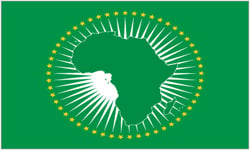| National Factbook |
| Flag: |

|
| Nation Name: |
Solmara |
| Leader Name: |
Marquis Higgins |
| Currency: |

Dollar |
| National Animal: |

Sheep |
| History: |
Once a scattering of indigenous fishing villages along the sun-soaked coast, Solmara became a cultural crossroads during the 17th century when French colonizers, West African traders (many displaced by slavery), and Mexican mariners converged on the land. Though colonized, Solmara was never fully subdued—resistance brewed for centuries through music, dance, and underground councils. In 1912, after a bloodless cultural revolution led by spiritual leaders and poets, the nation declared independence. A ceremonial council was formed, but over time, power consolidated into one seat: The Councilor—me. Since then, Solmara has flourished as a proudly independent, culturally rich nation that blends socialism with strong nationalistic identity, openly legal drug use, and fierce dedication to peace and pride. |
| Geography |
| Continent: |
North America |
| Land Area: |
6,437.36 sq. km |
| Terrain: |
Solmara’s landscape is a mesmerizing blend of lush coastal jungles, rugged inland highlands, and sun-baked plains. The western edge is lined with cliffs plunging into the azure sea, while inland rivers cut through volcanic foothills and dense forest. The southern border curves around arid plateaus known for agave and wild baobab trees. Much of the land remains undeveloped—respected as sacred by rural communities. |
| Highest Peak: |
Mt. Ondefeu ,
2 meters
|
| Lowest Valley: |
Vale de Marombra,
-96 meters
|
| Climate: |
Solmara enjoys a humid tropical climate, with temperatures averaging 24–31°C (75–88°F) year-round. Rainy season runs from May to October, often with short, powerful afternoon storms. Sea breezes cool the coasts while the highlands stay temperate and misty. Climate change has shifted rainfall patterns, but the country has invested in sustainable water capture and shade farming. |
| People & Society |
| Population: |
422,942 people |
| Demonym: |
Solmaran |
| Demonym Plural: |
Solmarans |
| Ethnic Groups: |
Afro-Solmaran - 54.0%
Mestizo - 31.0%
Franco-Solmaran - 12.0% |
| Languages: |
Solmaran Creole - 71.0%
French - 17.0%
Indigenous languages - 10.0% |
| Religions: |
Solmaran Spiritualism - 63.0%
Catholic - 26.0%
Non-religious - 9.0% |
| Health |
| Life Expectancy: |
79 years |
| Obesity: |
21% |
| Alcohol Users: |
67% |
| Tobacco Users: |
31% |
| Cannabis Users: |
48% |
| Hard Drug Users: |
7% |
| Economy |
| Description: |
Solmara’s economy is a state-guided socialist hybrid, mixing centralized planning with cooperative entrepreneurship. The government controls all major infrastructure and natural resources but encourages citizen-run collectives and artisan businesses. No Solmaran goes hungry or unhoused; essentials are state-subsidized, funded by thriving exports and state-owned banks.
Key exports include:
• Marumbra salt
• Agave derivatives
• Rare earth minerals (strictly monitored)
• Medicinal cannabis and psychedelics
• Spices, textiles, and artisan coffee |
| Average Yearly Income: |
$46.18 |
| Gross Domestic Product (GDP): |
$371,361,017.00 |
| GDP per Capita: |
$878.04 |
| Gross National Income (GNI): |
$234,820,195.00 |
| Industries: |
Tourism is a top industry, especially in Port D’Aube’s colonial district and Cielomar’s spiritual coastlines. Eco-tourism and cultural immersion packages are big draws, and all hotels are partially state-owned to prevent exploitation.
Major Industries:
1. Agriculture & Sustainable Farming – tropical fruits, fish farming, urban vertical farming
2. Pharmaceutical Botany – ayahuasca, cannabis, and ancestral medicine exported legally
3. Tech-for-Development – solar tech, water filtration, satellite comms
4. Cultural Exports – music, fashion, storytelling
5. Shipbuilding and Fishing – focused on eco-sustainability |
| Military |
| History: |
The Solmaran Peace Guard (SPG) is a small but elite defense force focused on domestic protection, cyber-defense, and humanitarian support. There is no standing army in the traditional sense; instead, every citizen receives 1 year of civil training in conflict mediation, emergency response, and basic combat.
Branches include:
• The Shore Sentinels (naval defense and disaster response)
• The Sky Harmonium (drone and satellite defense)
• The People’s Circle Guard (intelligence and counter-espionage)
• The Solmaran Medics’ Corps (deployed globally in disaster relief)
Solmara is officially non-aligned and pacifist, but will defend its borders fiercely if provoked. It supplies advanced nonlethal tech to peacekeeping missions and is a founding member of the Continental Southern Unity Pact, a coalition of small nations promoting mutual defense, trade, and cultural preservation.
Military spending is capped at 2.2% of GDP by constitutional law. The Solmaran Peace Guard is beloved for its cultural role as protectors of the people, not enforcers of control. |
| Soldiers: |
0 |
| Tanks: |
0 |
| Aircraft: |
13 |
| Ships: |
0 |
| Missiles: |
0 |
| Nuclear Weapons: |
0 |
| Last Updated: 07/10/2025 02:53 pm |













